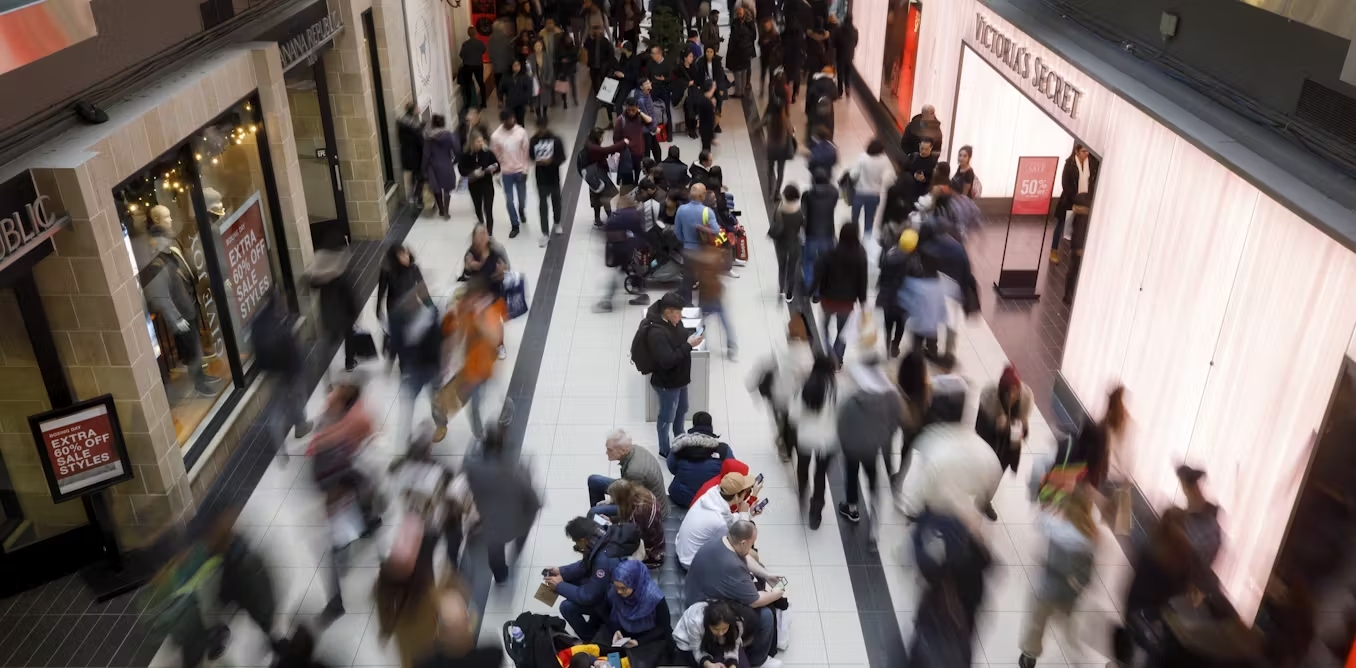Written by Omar H. Fares and Joseph Aversa, Toronto Metropolitan University. Originally published in The Conversation.
As inflation stabilizes, a new type of consumer has emerged, marked by value consciousness digital savviness, and a preference for experiences over material goods. THE CANADIAN PRESS/Cole Burston
After a long anticipated wait, the Bank of Canada has finally decided to cut interest rates by 25 basis points. The decision marks a departure from the series of interest rate hikes that were previously implemented to curb inflation.
The recent decrease appears to be signalling that inflation is finally starting to stabilize in Canada.
Over the past few years, Canadians have felt the strain of inflation. Many individuals turned to deal-chasing and savings as a way to build financial safeguards, giving rise to what we, as retail researchers, call the “new consumer.”
This “new consumer” phenomenon appears to be more than just a temporary response to economic hardships. It has since evolved into a more permanent behavioural shift, reflecting a broader transformation in consumer habits and preferences.
As inflation stabilizes and the economy adjusts to a new normal, businesses must adapt to meet the changing needs and preferences of this demographic.
Who is the ‘new consumer’?
The new consumer is marked by value consciousness, digital savviness and a preference for experiences over material goods.
Despite the recent stabilization of consumer prices, the new consumer has retained habits formed during economic uncertainty, continuously seeking deals and discounts.
According to the latest Future Consumer Index report by consulting firm Ernst & Young Global Limited, U.S. consumers are increasingly prioritizing savings over brand loyalty.
The survey revealed that nearly half of participants would download a brand’s app to access loyalty promotions or exclusive deals, while 70 per cent were inclined to join loyalty programs for free shipping benefits.
Additionally, 45 per cent of respondents have used discount codes or vouchers during online shopping in the past six months. This trend highlights the significant shift towards cost-conscious consumer behaviour.
Consumers are also actively using digital platforms to compare prices and read reviews, making more informed purchasing decisions than ever before. This digital savviness allows them to navigate the online marketplace efficiently, ensuring they get the best value for their money.
Physical store experience is still key
Despite the emphasis on looking for deals and reviews online, the new consumer still values in-store experiences. According to the Ernst & Young survey, 59 per cent of consumers visit stores to see, touch and try items before buying, and 57 per cent prefer in-store shopping to avoid shipping hassles.
Additionally, human interaction is increasingly important during the post-purchase journey. Fifty-six per cent of U.S. consumers consider it crucial for product returns and refunds, and 55 per cent value it for discussing product questions or concerns.
There’s also a notable shift towards experiential spending. Consumers are now more inclined to invest in travel, dining and unique activities over accumulating material possessions. This trend reflects a desire for meaningful and memorable experiences that offer greater satisfaction than physical goods.
Understanding these characteristics is essential in the new age of retailing. The new consumer’s focus on value, informed by digital tools and a shift towards experiential spending, defines their behaviour in a post-inflation world.
This evolving consumer profile presents both challenges and opportunities for brands and retailers, shaping the future of the retail landscape.

How retailers can cope
In an era where digital commerce continues to grow, physical retail stores are being forced to reinvent themselves, moving away from transaction points to vibrant hubs of brand experience. For instance, fuelled by the COVID-19 pandemic, retail e-commerce sales increased 67.9 per cent in Canada from February 2020 to July 2022.
This shift underscores the evolving role of physical stores, which are becoming places where consumers can learn, experience and play. As retailers adapt to changing consumer expectations, the notion that a store must be more than a place to transact is becoming a fundamental aspect of retail strategy.
A prime example of this trend is the Nike store in Manhattan, which epitomizes the concept of the store as a medium rather than just a marketplace. Far from the traditional retail setup, this location serves as a “playground” centred around experience.
The store includes a basketball half-court with adjustable hoops and digital screens, an enclosed soccer trial area, a treadmill facing a jumbotron for simulated outdoor runs, a customization shoes bar, touchscreens throughout and dedicated coaches to assist customers testing new sneakers.
The transformation of stores into experience-rich environments reflects a broader trend in retail where the value of a physical location is measured not just by traditional sales per square foot, but by the ability to engage consumers in a more meaningful ways. Retailers who invest in making their stores true extensions of their brand are primed to set themselves apart in an increasingly competitive marketplace.
Loyalty first
To thrive in this new retail landscape, leveraging loyalty programs is essential for retailers. These programs can help bridge the gap between digital and physical retail experiences by offering personalized rewards and exclusive deals that drive both online and in-store traffic.
Retailers should focus on creating loyalty programs that not only reward purchases but also enhance the overall customer experience.
For instance, integrating mobile apps that provide real-time notifications on deals and events, offering exclusive in-store experiences for members and using data analytics to tailor rewards to individual consumer preferences can significantly enhance engagement and retention.
In essence, the future of retail lies in these dynamic, personalized and interactive spaces where shopping is only part of the appeal.
![]()


